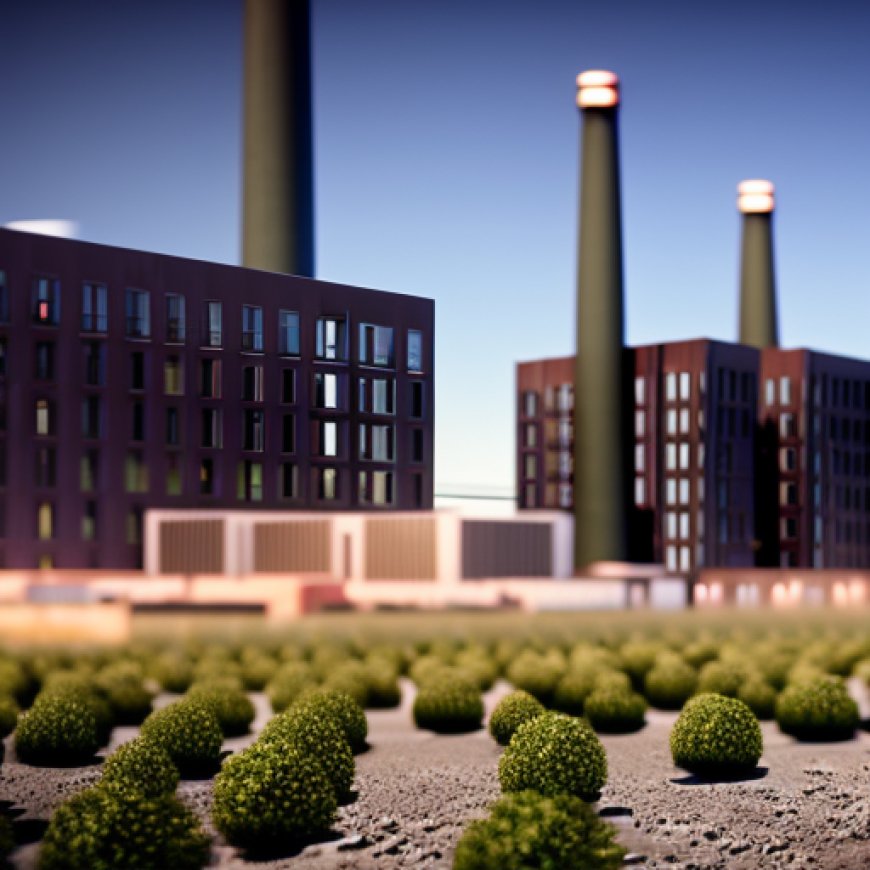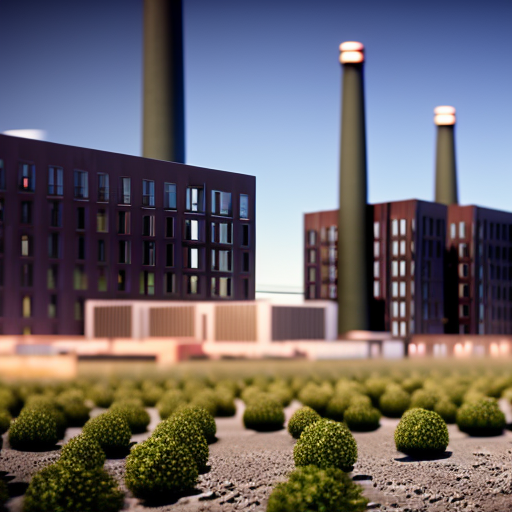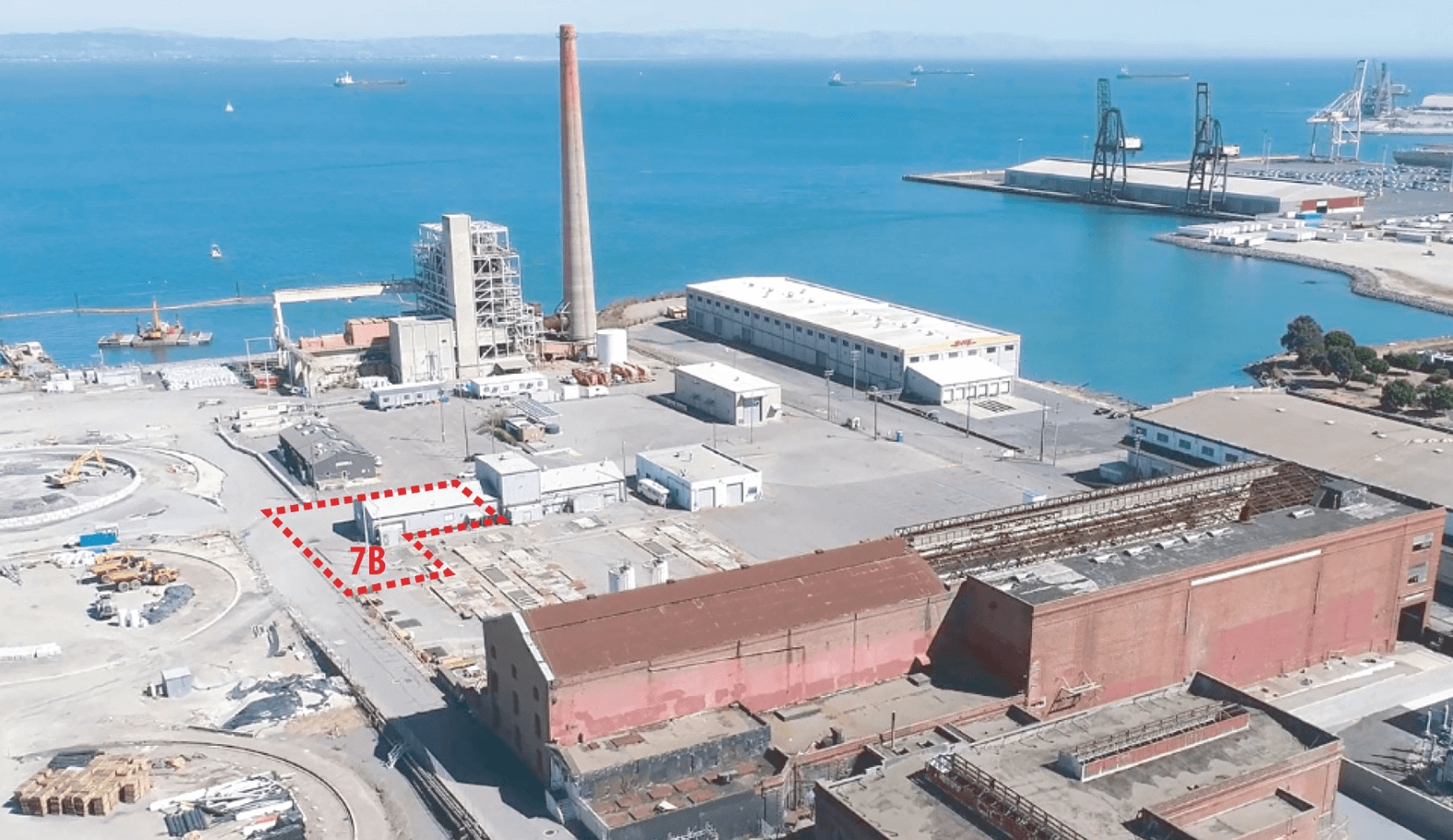Affordable Housing to be Built at Site of Retired Potrero Power Plant | Potrero View
Affordable Housing to be Built at Site of Retired Potrero Power Plant The Potrero View


The Maxwell: A Step Towards Sustainable Development Goals at Power Station

Last fall at Power Station, a 29-acre mixed-use project in Dogpatch, the development of The Maxwell, a 105-unit affordable apartment complex, began. The building is named after Sophenia “Sophie” Maxwell, who served as District 10 Supervisor from 2001 to 2011. Maxwell is the daughter of Enola Maxwell, founder and former director of the Potrero Hill Neighborhood House.
Shuttering the Former Power Plant
With support from the Potrero Power Plant Citizens Task Force, Sophie Maxwell played a crucial role in closing down the former Pacific Gas and Electric generating station in 2011.
Construction of The Maxwell
The construction of The Maxwell is expected to take around two years, which is typical for projects of its size. The concrete pad and infrastructure for the building are already in place. The John Stewart Company will be the nonprofit housing operator for The Maxwell.
Investment in San Francisco and Local Unionized Construction Workers
Larry Mazzola, Jr., San Francisco Building & Construction Trade Council president, stated that the construction of The Maxwell will provide employment opportunities for hundreds of building trades members. He emphasized that this building represents an investment in San Francisco and local unionized construction workers.
High Construction Wages and Affordable Housing
Dan Dunmoyer, head of the California Building Industry Association, acknowledged that high construction wages are cost-prohibitive in most areas of the state. However, Power Station aims to provide affordable housing, with 30% of the 2,600 residential units being offered below market rates.
Phased Development of Power Station
Power Station is expected to be developed in several phases over the next decade and beyond. Phase One is currently underway, with three residential buildings and more than 730 units planned. The Maxwell is the first building of this phase, which is more than double the original housing planned.
The Future of the City
Judson True, Mayor London Breed’s director of housing delivery, highlighted the importance of Power Station for the future of San Francisco. He mentioned that the project will bring affordable housing, commercial space, waterfront access, and protection from sea-level rise. True expressed that the City is closely observing the construction and interaction with local residents at Power Station to learn from its success.
Community Benefits and District 10 Supervisor’s Perspective
District 10 Supervisor Shamman Walton expressed his hope that the construction of Power Station will inspire other areas of the City to achieve similar accomplishments with large-scale developments. He emphasized the significance of bringing more affordable units to District 10 and the City as a whole.
Rentals and Neighborhood Preference
The rentals of the units at Power Station will be processed by the Mayor’s Office of Housing & Community Development. The only preference allowed by law is for residents of District 10, as per the City’s official policy.
Employment Opportunities for District 10 Residents
As construction progresses, additional residents from District 10 could be employed at Power Station. Young Community Developers (YCD) is negotiating with Associate Capital to hire more District 10 residents. CityBuild, an Office of Economic and Workforce Development (OEWD) program, provides pre-apprenticeship and construction skills training to City residents and connects them with job opportunities.
Enhanced Infrastructure Financing District (EIFD)
Power Station is the first development in San Francisco to use an EIFD, which captures incremental property tax revenue for infrastructure funding. The success of this financing model at Power Station could be replicated in other large projects in the City, such as Balboa Reservoir, India Basin, and ParkMerced.
History and Evolution of EIFDs
Enhanced Infrastructure Financing Districts (EIFDs) are successors to local redevelopment agencies (RDAs). RDAs were dissolved by the California Legislature in 2011 due to concerns about fund wastage and abuse of eminent domain power. The Office of Community Investment and Infrastructure (OCII) became the successor to the former San Francisco RDA. In 2015, Senate Bill 628 allowed cities or counties to create EIFDs.
Community Efforts and Public Financing Authority
The groundbreaking of Power Station represents years of community efforts. The Public Financing Authority No. 1 (PFA), which manages the Power Station EIFD, includes members nominated by supervisors and confirmed by the San Francisco Board of Supervisors. The PFA ensures collaboration among various parties to complete high-quality infrastructure.
Transformation of Former Industrial Sites
Just north of Power Station, Brookfield Properties is developing Pier 70, a mixed-use waterfront development. The site has undergone infrastructure construction, sea-level rise protection measures, and restoration of historic buildings. Brookfield Properties has attracted tenants from various sectors, contributing to the transformation of former industrial sites into vibrant spaces.
Pictured, top: The red outlines where The Sophie Maxwell Building will be erected at Power Station. Photo: Courtesy of Leddy Maytum Stacy Architects
SDGs, Targets, and Indicators
1. Which SDGs are addressed or connected to the issues highlighted in the article?
- SDG 1: No Poverty
- SDG 8: Decent Work and Economic Growth
- SDG 9: Industry, Innovation, and Infrastructure
- SDG 11: Sustainable Cities and Communities
- SDG 17: Partnerships for the Goals
2. What specific targets under those SDGs can be identified based on the article’s content?
- SDG 1.4: By 2030, ensure that all men and women, in particular the poor and the vulnerable, have equal rights to economic resources, as well as access to basic services, ownership, and control over land and other forms of property, inheritance, natural resources, appropriate new technology, and financial services, including microfinance.
- SDG 8.5: By 2030, achieve full and productive employment and decent work for all women and men, including for young people and persons with disabilities, and equal pay for work of equal value.
- SDG 9.1: Develop quality, reliable, sustainable, and resilient infrastructure, including regional and transborder infrastructure, to support economic development and human well-being, with a focus on affordable and equitable access for all.
- SDG 11.1: By 2030, ensure access for all to adequate, safe, and affordable housing and basic services and upgrade slums.
- SDG 17.17: Encourage and promote effective public, public-private, and civil society partnerships, building on the experience and resourcing strategies of partnerships.
3. Are there any indicators mentioned or implied in the article that can be used to measure progress towards the identified targets?
- Indicator for SDG 1.4: Proportion of the population living below the national poverty line, by sex and age group.
- Indicator for SDG 8.5: Employment-to-population ratio, by sex, age group, and persons with disabilities.
- Indicator for SDG 9.1: Proportion of the rural population who live within 2 km of an all-season road.
- Indicator for SDG 11.1: Proportion of urban population living in slums, informal settlements, or inadequate housing.
- Indicator for SDG 17.17: Number of countries that have national statistical legislation that complies with the Fundamental Principles of Official Statistics.
Table: SDGs, Targets, and Indicators
| SDGs | Targets | Indicators |
|---|---|---|
| SDG 1: No Poverty | Target 1.4: By 2030, ensure that all men and women, in particular the poor and the vulnerable, have equal rights to economic resources, as well as access to basic services, ownership, and control over land and other forms of property, inheritance, natural resources, appropriate new technology, and financial services, including microfinance. | Indicator: Proportion of the population living below the national poverty line, by sex and age group. |
| SDG 8: Decent Work and Economic Growth | Target 8.5: By 2030, achieve full and productive employment and decent work for all women and men, including for young people and persons with disabilities, and equal pay for work of equal value. | Indicator: Employment-to-population ratio, by sex, age group, and persons with disabilities. |
| SDG 9: Industry, Innovation, and Infrastructure | Target 9.1: Develop quality, reliable, sustainable, and resilient infrastructure, including regional and transborder infrastructure, to support economic development and human well-being, with a focus on affordable and equitable access for all. | Indicator: Proportion of the rural population who live within 2 km of an all-season road. |
| SDG 11: Sustainable Cities and Communities | Target 11.1: By 2030, ensure access for all to adequate, safe, and affordable housing and basic services and upgrade slums. | Indicator: Proportion of urban population living in slums, informal settlements, or inadequate housing. |
| SDG 17: Partnerships for the Goals | Target 17.17: Encourage and promote effective public, public-private, and civil society partnerships, building on the experience and resourcing strategies of partnerships. | Indicator: Number of countries that have national statistical legislation that complies with the Fundamental Principles of Official Statistics. |
Behold! This splendid article springs forth from the wellspring of knowledge, shaped by a wondrous proprietary AI technology that delved into a vast ocean of data, illuminating the path towards the Sustainable Development Goals. Remember that all rights are reserved by SDG Investors LLC, empowering us to champion progress together.
Source: potreroview.net

Join us, as fellow seekers of change, on a transformative journey at https://sdgtalks.ai/welcome, where you can become a member and actively contribute to shaping a brighter future.







